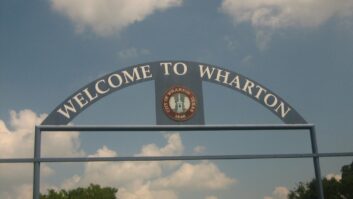While Washington and the Mid-Atlantic area are still recovering from the recent storms that brought hurricane-force winds to the area, NAB President/CEO Gordon Smith says the aftermath highlights the need to embed FM chips in cellphones and other mobile devices.
In fact, FCC Chairman Julius Genachowski is organizing a meeting to include broadcasters and wireless industry representatives on the topic for July 20.
In a letter to the chairman thanking him for scheduling meeting on the issue with broadcasters and wireless industry representatives, Smith says the “catastrophic” storms caused massive power outages from Ohio to the Washington metro and left tens of thousands of people without cellphone, landline and Internet connections during and immediately after the storms.
The situation allowed radio and TV to fill a communications void with timely reporting during the crisis, writes Smith, who notes that Washington’s all-news radio stations Hubbard’s WTOP(FM) and CBS Radio’s WNEW(FM) dedicated considerable resources to get vital information to listeners.
“Local radio stations are creatively engaging audiences on multiple platforms — including social media outlets like Twitter — to keep D.C. area residents informed,” according to Smith.
The NAB recently told Congress and now it’s telling the FCC that broadcasters believe the time is right for a serious discussion about the voluntary activation or embedding of FM chips in cellphones and other devices.
The weather emergency highlights that broadcasters’ so-called one-to-everyone “transmission architecture delivers a robust and reliable signal to hundreds of thousands of people simultaneously, with little or no risk of a service disruption,” writes Smith.
Some 50-some cellphone models sold in the U.S., out of many more models sold worldwide, have active FM chips. The association that represents the wireless companies as well as the Consumer Electronics Association have resisted the push, saying there is no huge consumer demand for the feature in this country.
Smith counters that thereisdemand and the cost associated with activating FM chips already in cellphones or embedding them in new models is minimal.
“In a time of deadly tornadoes, hurricanes, and wildfires, it just makes common sense to include a local, over-the-air radio feature in as many mobile devices as possible,” writes Smith.







